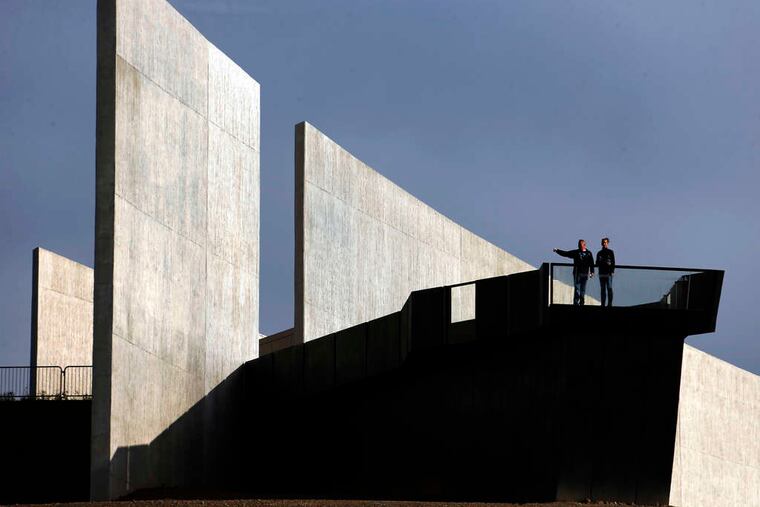Flight 93 site a fitting memorial to the souls lost on 9/11 | Opinion
Time passes but the sadness remains. And yet, the story told by the brave souls who rest there is one of selfless unity. Listen to their voices.

Over the summer, I was part of a group of teachers on a traveling graduate seminar sponsored by Freedoms Foundation at Valley Forge. As part of our studies, we visited the Flight 93 National Memorial in Somerset County, Pennsylvania.
I braced myself for the sensory battle that my brain and nerves and tear ducts were about to endure. The day was dreary. After a week of Pennsylvania sun and heat, the weather had turned damp and cool. It was still early when the coach pulled into the almost empty parking lot. As I disembarked, the warm drizzle was somehow comforting. I took a deep breath and ventured toward the site of the Sept. 11 plane crash, a sacred place.
Every person who remembers that day knows the site from newspaper and television images, but as historians and educators, our challenge is to inform students about the political, historical, and societal intricacies involved in Sept. 11. We try to explain the terror, suffering, and pain, while tailoring lessons to different ages. Like most history, it is difficult, and not always pretty. Messy. Cringe worthy. Sept. 11 is scary and traumatic. However, witnesses to history make the scary and difficult easier to understand.
So we try to tell the story through the experiences of people. What they saw, or heard, or felt. Not the army, but the heart of the soldier or the camp follower. Not the city, but the motivation of the inn keeper, the servant, or the factory worker. We encourage students to inhabit the time and place of the players. To hear their voices.
The Flight 93 Visitor Center is good on details. There is a timeline of events, the plane’s seating chart, and news reports of that horrible day. But the true impact of this memorial is in the voices. You can hear them. The recordings of calls home from Flight 93 are haunting. Imagine calling your loved ones knowing these could be the last words you share. How to begin? How to end? Some passengers sounded scared. Some worried. Some resigned. Others made plans — purposeful and determined. Their voices turn a somber, concrete building into a humble and fitting memorial.
I walked to the start of the long path that leads to the crash site. The generosity of the families has allowed the world to share in their deep grief. I took it slowly in the drizzle, pausing to notice the beauty of single flowers and lone trees. The chorus of birds was constant and comforting. It was fitting that the heavens were weeping. Their voices echoed in my mind as I quietly read aloud each name etched into flat stone panels placed so close together that, from a distance, it looked like a solid wall. The symbolism was subtle. Each one of the souls on Flight 93 stood tall as an individual, and yet they acted together. A wall of humanity.
Behind a simple gate, the site of the impact is marked by a large boulder and surrounded by wildflowers. The gaping, smoldering hole is long gone. There is neither wreckage nor fire. The site is peaceful and quiet. It is a humble and glorious resting place for the souls of Flight 93.
I tell my students that we are the legacy of our ancestors and the inspiration for our descendants. There are certainly individuals famous for making history. We know their names from textbooks and films. Their faces adorn stamps and money, their portraits hang in museums. More often, though, history is made by ordinary individuals. They become both legacy and inspiration.
The Flight 93 Memorial is a reminder of the tragedy in an isolated Pennsylvania field. Time passes but the sadness remains. And yet, the story told by the brave souls who rest there is one of selfless unity. Listen to their voices.
Jennifer Kretschmer is an eighth-grade history teacher at Thomas R. Pollicita Middle School in Daly City, Calif.